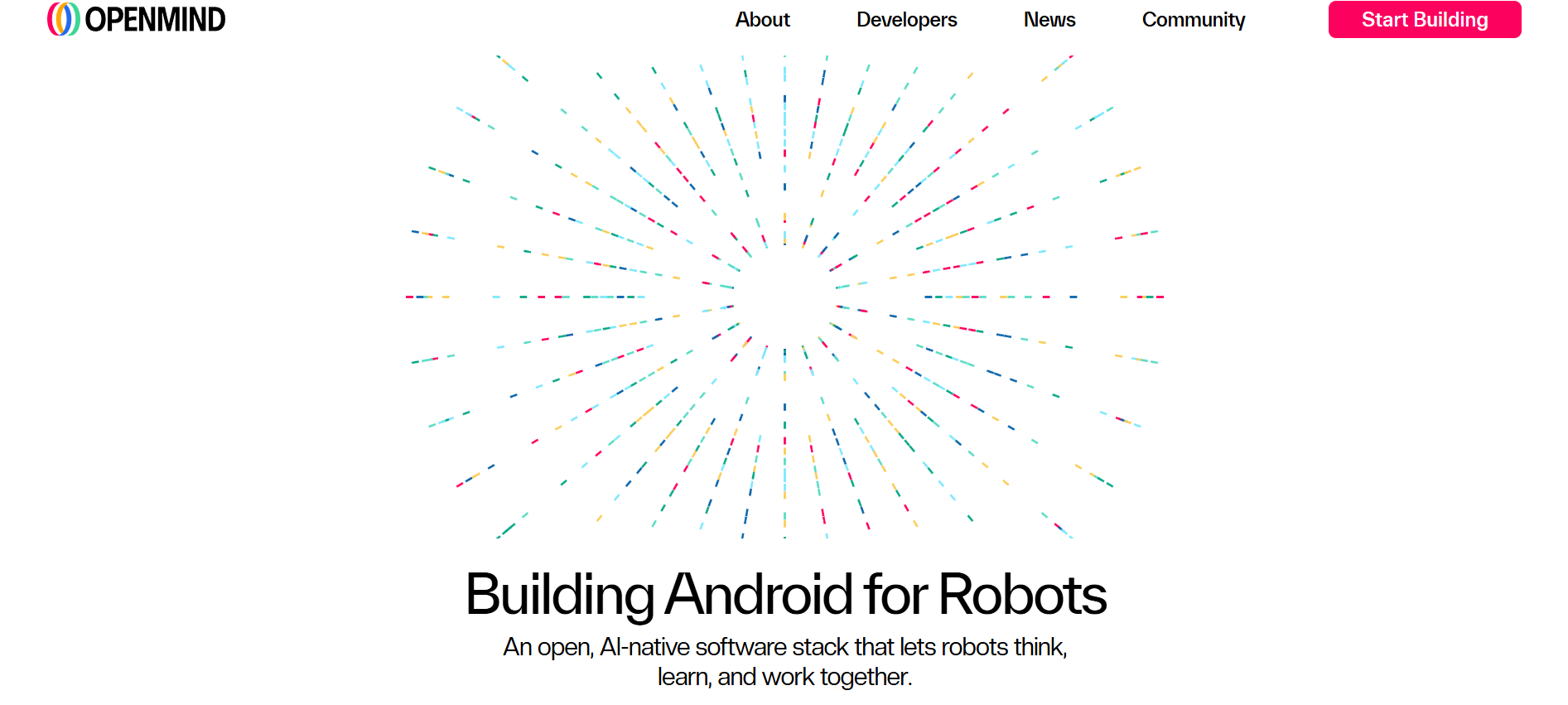OpenMind is a decentralized operating system and communication platform for managing robots and artificial agents, built on blockchain technologies. The project combines the modular OM1 OS, the FABRIC communication layer, and a decentralized governance system via DAO. Thanks to its unique architecture and the support of leading investors, OpenMind lays the foundation for a new era of fully autonomous, interacting robots within the Web3 ecosystem.
- Core Concept and Project Structure
- Architecture: OM1 and FABRIC
- Benefits and Goals of Blockchain Integration
- Team, Investments, and Partners
- OpenMind Ecosystem Prospects

Core Concept and Project Structure
OpenMind is not just an operating system but a full infrastructure aimed at connecting the world of autonomous machines with decentralized logic and control. At its core lies the idea that robots, like humans, must interact based on transparent rules verified across a distributed network.
The project unifies hardware, AI algorithms, cryptographic identification, and communication into one system. OM1 acts as the software foundation that governs device behavior, while FABRIC provides a distributed message bus built on blockchain principles.
Unlike centralized solutions, OpenMind enables autonomous agents to coordinate, make collective decisions, and operate safely even in chaotic environments.
Architecture: OM1 and FABRIC
The OpenMind architecture is designed with scalability, flexibility, and device interoperability in mind. It consists of two primary layers: the OM1 operating system that governs robotic behavior and decision-making, and the FABRIC communication layer that ensures secure and transparent coordination between devices. This architecture allows agents to operate autonomously yet coherently without relying on centralized servers or cloud infrastructure.
| Component | Purpose | Technologies | Example Use Cases |
|---|---|---|---|
| OM1 | Operating system for robots | Python, ROS, event-loop | Controlling TurtleBot, Unitree, Ubtech |
| FABRIC | Communication and consensus layer | IPFS, digital signatures, on-chain hashing | DAO governance, message exchange |
OM1 serves as the core, responsible for processing sensor data, decision-making, command execution, and interaction with external environments. It operates in a looped mode and supports adaptation to any type of robot, from service drones to robotic dogs.
FABRIC, in turn, acts as a decentralized communication bus where each agent publishes cryptographically signed events. This creates a transparent, verifiable decision-making and interaction system.
Benefits and Goals of Blockchain Integration
Integrating blockchain into the core of OpenMind makes the platform not only technologically versatile but also conceptually resilient to abuse, errors, and centralized control.
With on-chain identity, robots receive unique identifiers, and their actions can be tracked and verified at any time. DAO implementation enables decentralized governance where the community can propose improvements, vote on system architecture changes, and initiate upgrades.
It’s important to note that blockchain here is used not for raw data storage but as a coordination and trust mechanism between participants. This approach avoids scalability issues and maintains system performance under real-world conditions.
Thus, blockchain in OpenMind fulfills multiple roles: verification, coordination, and transparent governance. It acts as the foundation of machine-to-machine interaction in a digital environment—not a mere layer on top.
Team, Investments, and Partners
OpenMind was founded in 2024 by experts in robotics, artificial intelligence, and Web3. Key figures include Jan Liphardt, a Stanford professor and co-founder, Ali Hindy as CTO, and Paige Xu, responsible for strategy and partnerships.
The project quickly attracted attention from major venture funds. In 2025, OpenMind announced a $20 million funding round led by Pantera Capital and Coinbase Ventures. Other participants included Amber Group, Digital Currency Group, Variant Fund, and more.
Today, OpenMind collaborates with hardware manufacturers such as Unitree Robotics and TurtleBot, and has established educational partnerships with institutions like MIT and Stanford.
Below are the project’s key stakeholders:
-
Pantera Capital — strategic investor
-
Coinbase Ventures — Web3 development support
-
Amber Group — analytics and infrastructure
-
Digital Currency Group — financial architecture
-
Unitree Robotics — hardware partner
-
MIT AI Lab — research collaboration
The presence of these entities underlines the seriousness of OpenMind's vision and the industry’s trust in the project.
OpenMind Ecosystem Prospects
OpenMind positions itself as a foundational infrastructure project aiming to become the Web3 operating system for robots. Upcoming plans include launching a public SDK, hosting hackathons, and releasing a governance token.
The ecosystem will feature not only tools to launch OM1 and connect to FABRIC, but also a marketplace for sharing modules, behavior scripts, and agent logic. This will foster collaboration among developers, researchers, enthusiasts, and companies within a unified digital infrastructure.
The emergence of competitors in adjacent niches (Spectral, Prime Intellect, Revox AI) confirms the relevance of this direction. Yet, OpenMind stands out due to its robust architecture, real hardware integrations, and strong technical base.
If the project continues along its declared trajectory, it could become the industry standard for on-chain robotics and machine autonomy in the Web3 space.




